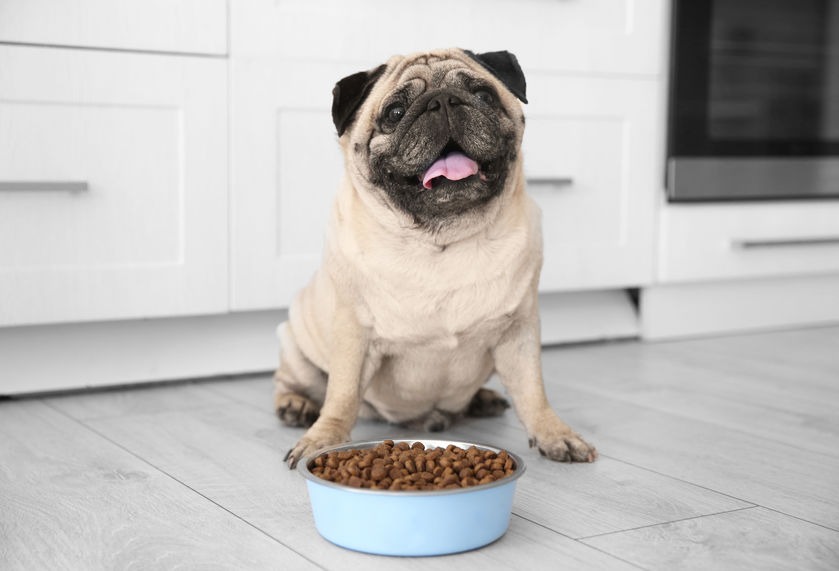You cuddle them, you cherish them, you exercise, water and feed them. You take them for regular medical check-ups. You treat illness immediately. So what if they’re a little rounded, right? Wrong. Pet obesity is a huge problem in the human world, and letting your pets become overweight can put them at risk of a number of obesity-related diseases.
Bigger isn’t better
In 2018, the Pet Obesity Prevention organisation reported that 56 million cats and 50 million dogs in the USA were grossly overweight. South African figures regarding their pet’s figures aren’t much better: in 2019 Dr. Guy Fyvie, nutritional adviser for Hill’s Pet, warned that almost half of South Africa’s cats and dogs were overweight.
According to the World Animal Rescue Fund in the United Kingdom, obesity is “a form of abuse, and can cause significant physical and mental health problems,” along with affecting the quality of life and overall lifespan of our furry friends.
Overweight animals also often struggle to move normally, leading to an inability to exercise adequately – which, in turn, leads to even more weight gain. They may find themselves in a state of constant discomfort and pain, which can then lead to frustration and even depression.
Dogs who are overweight may also experience ruptured cruciate ligaments, dyspnoea characterized by a shortness of breath, fatigue, cardiovascular disease, impaired reproductive efficiency, problems during whelping, increased incidence of diabetes mellitus, as well as an increased incidence of certain cancers.
What counts as obesity?
Obesity is “an accumulation of excess body fat resulting in body weights over 15% of optimum,” the Pet Health Network (PHN) advises. For a small dog like a Chihuahua, this can be as little as 330g, while a large dog like a Rottweiler may need to be over 7.5kg overweight to be considered obese.
Your pet’s optimum body fat will depend on their genetics, age, underlying health issues, and more, so it helps to know what your dog should look like.
“No matter your dog's breed,” Katie Finlay from Hill’s Pet explains, “you should be able to feel all of your dog's ribs without a thick layer of fat over them. Your dog's chest should also be wider than his abdomen, with a noticeable tuck-up from chest to stomach. An overweight dog will generally have no waist and no distinction between chest and stomach. “
In addition, there are a number of useful online diagrams like this one from VCA Hospitals, but the best person to diagnose your pet’s BMI (Body Mass Index) will always be your trusted vet.
Sometimes it’s just genetics
The PHN points out that some pure breed dogs like Dachshunds, Labrador Retrievers, Miniature Schnauzers, Welsh Corgis, Cocker Spaniels, and Beagles have a tendency to put on weight, but even dogs who don’t have a genetic predisposition can gain weight due to underlying conditions including:
• Hypothyroidism (not to be confused with hyperthyroidism, in which the opposite occurs)
• Hyperadrenocorticism (Cushing’s Syndrome)
• Intestinal parasites
• Fluid retention
• Medication
The most common non-medical cause is old age as the metabolism slows down and the dog becomes less active.
For the vast majority of young and otherwise healthy dogs, the two most obvious causes of weight gain are a lack of exercise and overeating – things that can easily be rectified by an owner who is willing to change their behaviour to get their dumpy dog to a healthy weight.
How to prevent weight gain
Regular vet check-ups - These ensure your dog’s diet, health and wellness are monitored and diet, exercise and treatments updated accordingly.
Diet – Speak to your vet about healthy, nutritionally balanced foods appropriate to your individual pets’ needs. The Wiley Animal Rescue Foundation equates two plain dog biscuits to a human eating two large chocolate cupcakes, so don’t go overboard on the treats.
An active life – Appropriate exercise is a must. If your dog is not a natural runner, swimmer, or walker, try games that engage the mental and physical faculties.
Treatment for your tubby pup
After conducting tests that rule out any underlying medical conditions, your vet will advise on exercise and diet suited to the state of your portly pup’s physical ability and organ function.
He or she may also prescribe interventions like medication, underwater therapy, a high-protein, low-fat diet, and rebound weight gain treatment.
Today’s Veterinary Practice suggests that up to half of the dogs who lose weight (whether they’re obese to start with or not) put 5% of what they’ve lost back on – so whatever intervention you choose needs to be a lifelong commitment, not a crash diet.
Even a pet with the perfect mass can fall ill. Pet cover helps pay for the medical bills of treating your dog. Get a pet insurance quote in less than 3 minutes online here



